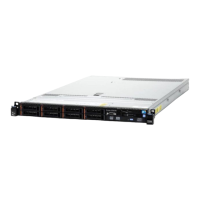Chapter 3. Maintenance Analysis Procedures (MAPs)
This chapter contains maintenance analysis procedures (MAPs) for the system.
Entry MAP
Use the following table to determine your starting point.
When possible, run online diagnostics in service mode. Online diagnostics perform additional functions,
compared to standalone diagnostics. This ensures that the error state of the system is captured in NVRAM
for your use in fixing the problem. The AIX error log and SMIT are only available when diagnostics are run
from the hard drive.
Notes:
1. Licensed programs frequently rely on system information stored in the VPD module on the primary I/O
drawer operator panel. If the MAPs indicate that the primary I/O drawer operator panel should be
replaced, swap the VPD module from the old primary I/O drawer operator panel to the new one. If the
old VPD module has to be replaced call technical support for recovery instructions. If recovery is not
possible, notify the system owner that new keys for licensed programs may be required.
2. If a network adapter is replaced, the network administrator must be notified so that the client IP
addresses used by the server can be changed. In addition, the operating system configuration of the
network controller may need to be changed in order to enable system startup. Also check to ensure
that any client or server that addresses this system is updated.
Symptom Starting Point
You have a problem that does not prevent the system
from booting and all I/O drawer operator panels are
functional.
Go to the ″Fast Path MAP″ in the RS/6000 and Eserver
pSeries Diagnostic Information for Multiple Bus Systems.
You have a problem that does not prevent the system
from booting and an I/O drawer operator panel is not
functioning.
Replace the following parts in the secondary I/O drawer
with the non-functioning operator panel, one at a time, in
the sequence listed:
1. Secondary I/O drawer operator panel
2. Secondary I/O drawer backplane
You do not have a symptom. Go to ″MAP 0020: Problem Determination Procedure″ in
the RS/6000 and Eserver pSeries Diagnostic
Information for Multiple Bus Systems.
You have an SRN. Go to the ″Fast Path MAP″ in the RS/6000 and Eserver
pSeries Diagnostic Information for Multiple Bus Systems.
The system stops and a 3-digit number is displayed in the
operator panel display.
Record SRN 101-xxx, where xxx is the 3-digit number
displayed in the operator panel display, then go to the
″Fast Path MAP″ in the RS/6000 and Eserver pSeries
Diagnostic Information for Multiple Bus Systems.
The system stops and a 4-digit number beginning with 0
or 2 is displayed in the operator panel display.
Go to the ″Fast Path MAP″ in the RS/6000 and Eserver
pSeries Diagnostic Information for Multiple Bus Systems.
All other symptoms. Go to “Quick Entry MAP” on page 72.
71
